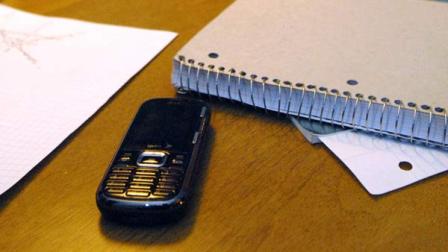Locals despair as ‘The Hum’ makes life a living hell
Tuesday, April 03, 2012
IT’S there. All day, every day; all night, every night.
But nobody has even the remotest idea of what it is or what could possibly be causing it.
It has become known simply as The Hum, which is the only description despairing locals can find to adequately describe a constant, pulsating, low-frequency noise, the source of which cannot be traced, despite best efforts.
When frustrated residents in the tranquil Kerry parish of Beaufort went public to tell how their lives have been made a living hell by the mystery noise — which is ringing in their ears all day and disrupting their sleep by night — little did they know the impact it would have.
Fascinated audiologists with sophisticated detection equipment made a beeline for the remote townland of Glencuttane, 15km from tourist hotspot Killarney, at the foot of Carrauntoohil mountain.
Excitable, self-described ghosthunters weren’t far behind and much to the annoyance of residents, some media rather impishly devised conspiracy theories that ranged from mildly amusing to ridiculous.
But the saga finally got the official platform locals insist it deserved in recent days when South Kerry TD Michael Healy-Rae raised the matter in the Dáil, via a series of parliamentary questions directed at Phil Hogan, the environment minister.
"I asked the minister to send out people to try and come to the bottom of it," said Mr Healy-Rae, who personally heard the noise when he met with disgruntled locals.
But Mr Hogan could offer no solution and little consolation other than to advise the residents to voice their concerns to Kerry County Council’s environment office and an investigation might be sanctioned.
The official response has been lambasted by Mr Healy-Rae as "away with the fairies gobbledygook".
Council engineers have already ruled out a local authority water pumping station as a possible factor and weary locals, now at the end of their collective tether, had already determined that there are no mobile phone masts, windmills or generators in the area that could be the source of the noise.
Furthermore, the ESB has assured them that the problem is not due to any high-tension overhead wires and while sound technicians have been able to confirm that the noise has a vibrating, low frequency, they are no closer to identifying any potential explanation.
Some householders in Beaufort have been hearing the bizarre humming sound since April of last year and, at this stage, they say it is making their lives a complete misery.
"We are nearly gone out of our minds because we can’t get a decent night of sleep and it’s there every day," said one, who described the noise as being similar to a diesel engine ticking over in a nearby field. "There are times when you absolutely can’t ignore it because it’s so present, mostly at night because it’s so quiet."
He said the irritating noise is even more noticeable inside dwellings and despite extensive insulation, houses appear to vibrate, particularly in the stillness after dark.
Rather unusually, not everybody can identify with the low buzzing noise and locals acknowledge that if they gathered 10 people in one room, they estimate that just two would be able to hear it. That said, at least a dozen families over a 5km radius have come forward to divulge that they have been disturbed by the baffling aural interference.
One resident even went to the extreme of seeking help from his family doctor and was relieved to learn that he didn’t have a problem with his hearing.
Others, who can’t sleep at night, have taken to wearing earplugs in an attempt to block out the mystery noise.
In the absence of any logical explanation, there is growing belief by some observers that the noise might possibly be linked to a weird worldwide phenomenon that has become known, simply, as The Hum.
Similar mystery noises, all involving persistent and invasive low-frequency humming sounds, have been reported in many parts of the world and complaints have been voiced by residents in several locations, including England, Russia, New Mexico, New Zealand and Indiana.
Inconclusive research into possible causes for The Hum has been conducted in universities in Florida, Oklahoma and Auckland, but, despite the best efforts of experienced boffins, no real progress has been made.
Beaufort residents are quick to stress, however, that they are not suggesting for one minute that the noise that is impacting so negatively on their daily lives is linked in any way to the humming sounds detected elsewhere.
"We don’t know what it is and it’s as simple as that.
"We’re hoping that we might get some help from somewhere to try and investigate this and see what it might be," said one concerned local.
It has become known simply as The Hum, which is the only description despairing locals can find to adequately describe a constant, pulsating, low-frequency noise, the source of which cannot be traced, despite best efforts.
When frustrated residents in the tranquil Kerry parish of Beaufort went public to tell how their lives have been made a living hell by the mystery noise — which is ringing in their ears all day and disrupting their sleep by night — little did they know the impact it would have.
Fascinated audiologists with sophisticated detection equipment made a beeline for the remote townland of Glencuttane, 15km from tourist hotspot Killarney, at the foot of Carrauntoohil mountain.
Excitable, self-described ghosthunters weren’t far behind and much to the annoyance of residents, some media rather impishly devised conspiracy theories that ranged from mildly amusing to ridiculous.
But the saga finally got the official platform locals insist it deserved in recent days when South Kerry TD Michael Healy-Rae raised the matter in the Dáil, via a series of parliamentary questions directed at Phil Hogan, the environment minister.
"I asked the minister to send out people to try and come to the bottom of it," said Mr Healy-Rae, who personally heard the noise when he met with disgruntled locals.
But Mr Hogan could offer no solution and little consolation other than to advise the residents to voice their concerns to Kerry County Council’s environment office and an investigation might be sanctioned.
The official response has been lambasted by Mr Healy-Rae as "away with the fairies gobbledygook".
Council engineers have already ruled out a local authority water pumping station as a possible factor and weary locals, now at the end of their collective tether, had already determined that there are no mobile phone masts, windmills or generators in the area that could be the source of the noise.
Furthermore, the ESB has assured them that the problem is not due to any high-tension overhead wires and while sound technicians have been able to confirm that the noise has a vibrating, low frequency, they are no closer to identifying any potential explanation.
Some householders in Beaufort have been hearing the bizarre humming sound since April of last year and, at this stage, they say it is making their lives a complete misery.
"We are nearly gone out of our minds because we can’t get a decent night of sleep and it’s there every day," said one, who described the noise as being similar to a diesel engine ticking over in a nearby field. "There are times when you absolutely can’t ignore it because it’s so present, mostly at night because it’s so quiet."
He said the irritating noise is even more noticeable inside dwellings and despite extensive insulation, houses appear to vibrate, particularly in the stillness after dark.
Rather unusually, not everybody can identify with the low buzzing noise and locals acknowledge that if they gathered 10 people in one room, they estimate that just two would be able to hear it. That said, at least a dozen families over a 5km radius have come forward to divulge that they have been disturbed by the baffling aural interference.
One resident even went to the extreme of seeking help from his family doctor and was relieved to learn that he didn’t have a problem with his hearing.
Others, who can’t sleep at night, have taken to wearing earplugs in an attempt to block out the mystery noise.
In the absence of any logical explanation, there is growing belief by some observers that the noise might possibly be linked to a weird worldwide phenomenon that has become known, simply, as The Hum.
Similar mystery noises, all involving persistent and invasive low-frequency humming sounds, have been reported in many parts of the world and complaints have been voiced by residents in several locations, including England, Russia, New Mexico, New Zealand and Indiana.
Inconclusive research into possible causes for The Hum has been conducted in universities in Florida, Oklahoma and Auckland, but, despite the best efforts of experienced boffins, no real progress has been made.
Beaufort residents are quick to stress, however, that they are not suggesting for one minute that the noise that is impacting so negatively on their daily lives is linked in any way to the humming sounds detected elsewhere.
"We don’t know what it is and it’s as simple as that.
"We’re hoping that we might get some help from somewhere to try and investigate this and see what it might be," said one concerned local.
Read more: http://www.irishexaminer.com/ireland/locals-despair-as-the-hum-makes-life-a-living-hell-189224.html#ixzz1rMRCxB9N



 Use a headset. RF waves are transmitted through the phone's antenna, so avoid placing the antenna against your head.
Use a headset. RF waves are transmitted through the phone's antenna, so avoid placing the antenna against your head.